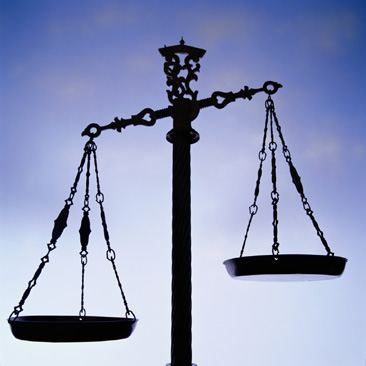Brain game – weighing 24 coins
 You have 24 coins. 23 coins are the same weight, but 1 coin is either heavier or lighter. All you are given is a set of BALANCE scales, which can compare the weight of any two sets of coins out of the total set of 24 coins.
You have 24 coins. 23 coins are the same weight, but 1 coin is either heavier or lighter. All you are given is a set of BALANCE scales, which can compare the weight of any two sets of coins out of the total set of 24 coins.
What is the minimum number of weighings required to identify the coin, and why?
Can you figure out what is odd about this paragraph? | Back – Next | How long did Christopher live?


4 times. You could figure it out exactly with 4 weighings.
Would you give us the step by step process?
Maybe it’s 5. I thought we knew the one coin was lighter.
1. Take the 24 and split into 2 groups of 12
2. Take the heavier 12 and split into 2 groups of 6. Let’s assume worst case, which is that they are equal.
3. Take the lighter 12 coins and split into 2 groups of 6.
4. Take the lighter 6 and split into 2 groups of 3.
5. Take any 2 from the lighter group of 3 and weigh them. The lighter coin will be the odd one. If they are the same then the one not weighed will be the odd one.
The MINIMUM number of weighings would be two – the first weighing shows coins 1 and 2 to be of unequal weights … leave the heavier coin (coin 2) in the balance and place coin 3 on the other side … if coin 3 is lighter than coin 2, it is the same weight as coin 1 and the unequal coin is coin 2 (heavier) – if coin 3 is equal to coin 2, then the unequal coin is coin 1 (lighter).
If you don’t get the unequal weighted coins in the first trial, the number of weighing would be more – but the question is “what is the minimum number of weighings to identify the coin”.
Are you sure 2 will be enough to determine the exact coin?
Unless I misunderstood the question, I think Doug is asking for the exact number of weighings necessary to determine the odd coin.
Admin please clarify.
Robert is correct. If you were going to be shot and killed unless you could find the coin in less than 3 tries, you would not use the solution that requires 4 weighings. You would use Roberts solution which might give a solution in only 2 weighings. Of course you have to get lucky to do it in two – there is only a 1 in 8 chance of pulling it off (1 in 12 chance of one of 1st two coins you pick being the right one, but if not you get one more chance by picking one more coin from remaining 22 coins to weigh against one of the 1st two, so in effect you pick 3 coins out of 24 = 1 in 8)). But it least you had a chance to live. Using the “correct” 4 step weighing, you would surely die.
Is this asking to find the exact weight? If it’s lighter, it appears to be impossible since we only have 1 undersized coin and added to any multiple of the equal-sized coins will never be equal. If heavier, than it would have to be a mutliple of the equal-sized coin and therefore attainable. But than the minimum number of trails would be 1 twice the weight….
What am I missing?
Allan,
We are looking for the minimum number of times you will have to use the scale to be left or determine the exact “problem” coin.
Ken.
The answer is 6 times weighing. The steps are as follow:
Step 1
Make 2 groups of 12 coins each.
Weighing # 1
Weigh first group making 6 & 6 coins on each pan of the balance.
Weighing # 2
Weigh second group similarly.
Step 2
Make 2 groups containing 4 & 2 coins from one of the previous unbalanced group of 6 coins. Name as AB & C
Weighing # 3
Weigh the group of 4 coins (AB) making 2 & 2 each side. Name as A & B.
Step 3
If the weighing shows unbalanced then take 1 coin from (A pan) for further action, name it as A1.
Take another coin from the group of 2 coins of step 2, pan C.
Weighing # 4
Weigh one coin each on either side, A1 & C.
Step 4
If the weighing is balanced then take another coin from A1 pan, name it as A2.
Weighing # 5
Weigh one coin each on either side, A2 & C.
Step 5
If the weighing is balanced then take one coin from pan B, name it as B1.
Weighing # 6
Weigh one coin each on either side, B1 & C.
Step 6
If the weighing is balanced then the coin(B2) left from the pan B group is the interested one.
If the weighing is unbalanced then coin B1 is the interested one.
Hence, the minimum number of weighing required to find the coin that is heavier or lighter than the rest of other 23 coins is 6.
However, if the weighing of A & B at stage 2 is balanced, then the number of weighing will be less.
Sorry, coins not balls.
It only takes 3 uses of the balance.
Take the 24 balls, separate into groups of 8 – G1, G2, G3.
Weight G1 against G2. Select group that is heavier. If equal, then G3 has the heavy ball.
Take the 8 balls, separate into groups of 3, 3, 2 – G1, G2, G3.
Weight G1 against G2. Select group that is heavier. If equal, then G3 has the heavy ball.
Final step, you either have 3 balls or 2 balls. For 2 balls, just compare and find the heavier one. For 3 balls, eparate into groups of 1, 1, 1 – G1, G2, G3.
Weight G1 against G2. Select group that is heavier. If equal, then G3 has the heavy ball.
First, put 12 vs. 12 coins on the balance (01). Then take any of the 12-pack and divide them in 2, measure again (02). If they are equal, throw them away and concentrate on the other dozen. Furthermore, you already know if the troublesome coin is lighter or harder.
Now you only need 1 step to isolate 6 coins containing the troublesome one (03)
Repeat above step (04) and you end up with 3 coins. Now take any 2 coins and measure them (05). Depending on the result, you will find out which is the coin.
So I’d say 5 steps are enough.